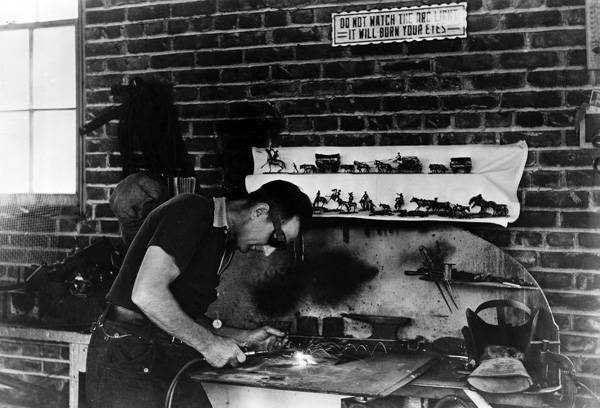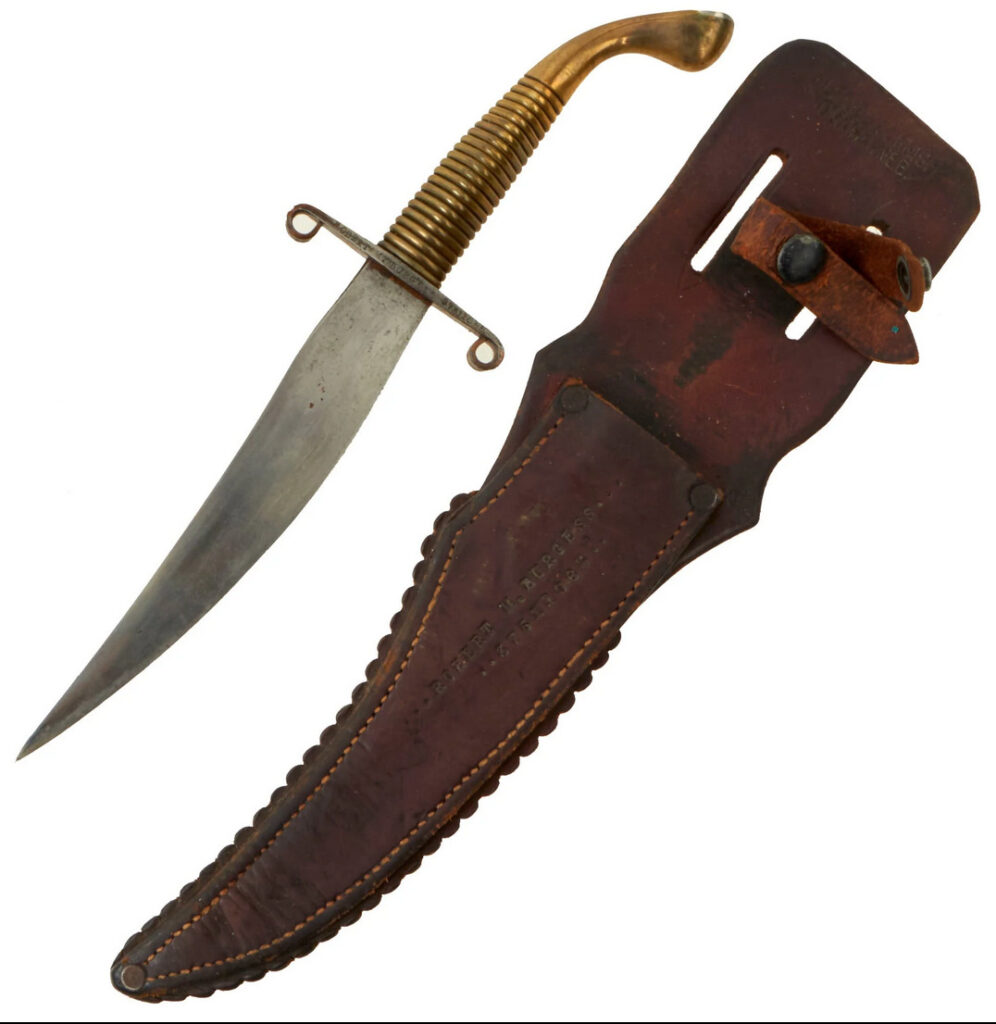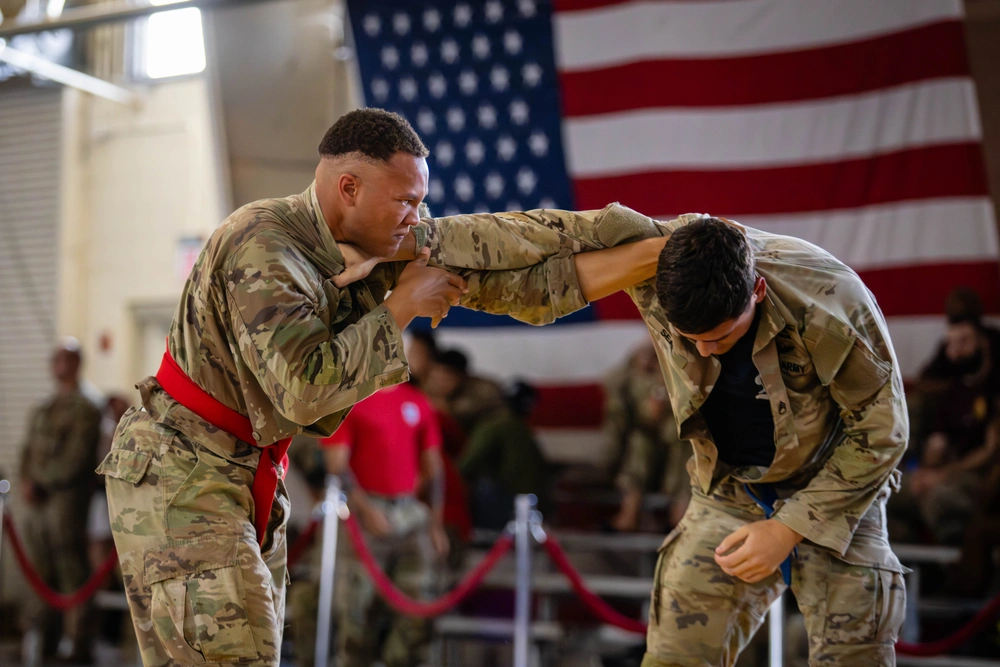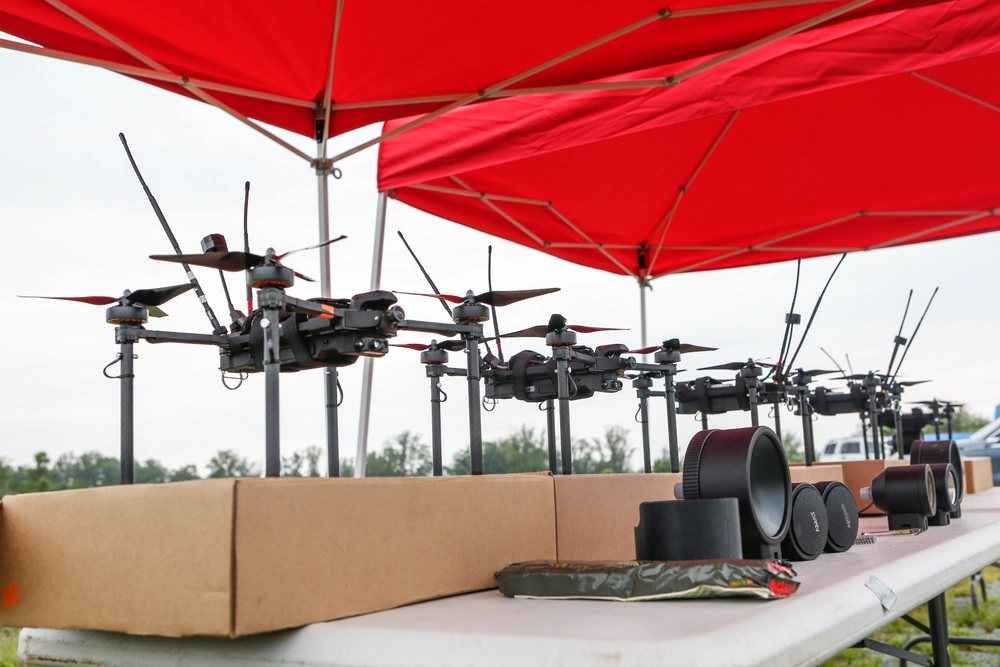Floyd Nichols’ handcrafted WWII knives never achieved wide fame but are now collectible
- By Travis Pike
Share This Article

World War I and World War II were arguably the last wars where a fighting knife was needed. Fighting knives from World War II, like the KA-BAR, were massively successful and are still produced today. Other knives, like the Floyd Nichols fighting knives, are more obscure but famed in the world of knife collectors.
Floyd Nichols was a fascinating guy and a bit of a rabble-rouser. As a young teenager growing up in Nebraska, he broke wild horses. At 16, he left home and did what all true cowboys would do – went west. For a bit, he lived with a group of Native Americans in the Badlands and worked for Jules Sandoz, the father of writer and historian Mari Sandoz.
Still 16 years old, he eventually arrived at his aunt’s ranch in Wyoming with the intention of creating his own farm and ranch. Before that could occur, however, World War I broke out. Nichols was too young to join legally, so he grew a mustache and lied about his age.
He headed to Europe, where he was trained and served as a motorcycle messenger carrying messages to and from the front lines. That experience imbued him with a love of motorcycles, and in later life, he would exhibit those motorcycle skills at fairs by jumping logs, stumps, and trenches.
After the Great War, he eventually became a welder, sculptor, and metal worker. And when World War II broke out and America joined the fight he would put his skills to good use.
World War II creates a need for fighting knives
America wasn’t ready for a war. When the country entered the war, among other shortages, the military had more men than knives. This led to the creation of the Save A Life With a Knife Committee and to large donations of knives. Yet, the quality of the weapons varied greatly and few were appropriate for warfare.
Men like Floyd Nichols created custom fighting knives for troops heading overseas. However, according to Antiques Roadshow, this was somewhat controversial, as making knives required knifemakers to use war materials that were needed elsewhere. Even though the government would have preferred to make and issue its own knives, no one tried to stop Nichols.
Nichols didn’t produce many knives. Although we don’t know for certain it seems that he must have been a one-man or a very small shop since his knives are very rare.
Related: The American Committee for the Defense of British Homes
Floyd Nichols and his handmade knife

The Floyd Nichols knife stands out compared to most World War II fighting knives. It appears to combine hints of Middle Eastern influences with an American bowie knife. The blade measures 7.5 inches and is deeply curved with a prominent belly that would deliver deep slashes. The curved spine gives the blade an extremely distinct look that is sometimes called a Persian style.
The handle curved somewhat downward, and the tail of the handle curved in the direction of the blade. Plowshare Forge calls this a Swan Neck profile, a term I’ve never heard. The pommel had a huge handguard that offered a lot of protection to the hand. The ring-type grip was heavily textured The overall length of the Nichols knife was 13 inches.
It’s worth noting that these knives were all handmade and variances will be found. Nichols reportedly produced these knives for every serviceman drafted into World War II from his home county in Nebraska.
The handguard on most of these knives features the owner’s name and a serial number. The end of the grip is stamped with “Nichols” and a Native American head.
Floyd Nichols teamed up with a local saddlemaker Alred Cornish to produce the leather sheath for the rig.
A collectible weapon
Floyd Nichols knives pop up at auctions fairly often these days and a quick browse across the internet shows a dedicated collector’s community.
The Nichols knife never gained the same fame as knives like the KA-BAR or Trench Knife, but it is appreciated by collectors. It even got its time on the silver screen in the movie Sands of Iwo Jima where John Wayne carries one on the beach landing scene.
After the war, Mr. Nichols returned to being a sculptor and motorcycle enthusiast. He passed in 1958, but his knives have given him a lasting legacy.
Feature Image: Floyd Nichols in his workshop. (Creative Commons via Plowshare.Blogspot)
Read more from Sandboxx News
- Top 3 foreign policy questions for the new Trump administration
- Meet CHAPPIE, the Space Force’s robot that can sniff nuclear material
- Video: The Barracuda cruise missile is like a Hellfire on steroids
- 50,000 Russian and North Korean troops prepare to attack Ukrainian forces in Kursk
- Semper Fi: The Marine Corps is turning 249 years old. Let’s talk about its birthday celebrations
Related Posts
Sandboxx News Merch
-

‘AirPower’ Classic Hoodie
$46.00 – $48.00Price range: $46.00 through $48.00 Select options This product has multiple variants. The options may be chosen on the product page -

‘Sandboxx News’ Trucker Cap
$27.00 Select options This product has multiple variants. The options may be chosen on the product page -

‘Kinetic Diplomacy’ Bumper Sticker (Black)
$8.00 Add to cart

Travis Pike
Travis Pike is a former Marine Machine gunner who served with 2nd Bn 2nd Marines for 5 years. He deployed in 2009 to Afghanistan and again in 2011 with the 22nd MEU(SOC) during a record-setting 11 months at sea. He’s trained with the Romanian Army, the Spanish Marines, the Emirate Marines, and the Afghan National Army. He serves as an NRA certified pistol instructor and teaches concealed carry classes.
Related to: Gear & Tech, Military History

Energy drinks were the unsung hero of the Global War on Terror

How hand-to-hand combat training in the US military has evolved

Russia has been trying a tactic of ‘a thousand cuts’ in Ukraine

The benefits of drones for the Marine Corps
Sandboxx News
-

‘Sandboxx News’ Trucker Cap
$27.00 Select options This product has multiple variants. The options may be chosen on the product page -

‘AirPower’ Classic Hoodie
$46.00 – $48.00Price range: $46.00 through $48.00 Select options This product has multiple variants. The options may be chosen on the product page -

‘AirPower’ Golf Rope Hat
$31.00 Select options This product has multiple variants. The options may be chosen on the product page -

‘Sandboxx News’ Dad Hat
$27.00 Select options This product has multiple variants. The options may be chosen on the product page
